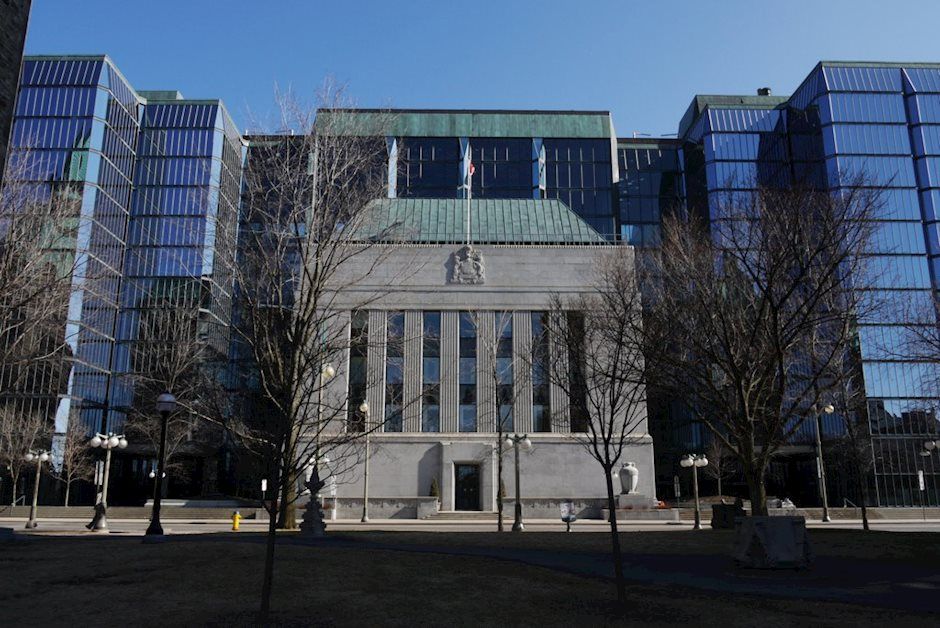USD/CAD pulls back after April Bank of Canada policy decision
- USD/CAD pulls back after the BoC strikes a dovish tone in its policy statement.
- BoC sees signs of inflation easing accompanied by higher growth.
- USD/CAD continues broadly rising within a strict ascending channel.

USD/CAD has pulled back about two tenths of a percentage point on Wednesday, following the Bank of Canada’s (BoC) decision to leave its key overnight interest rate unchanged at 5.0%, in line with analysts’ expectations.
The pair is trading in the 1.3660s at the time of writing, maintaining its overall bullish tone after the US Dollar rallied following the release of hotter-than-expected US Consumer Price Index data for March.
USD/CAD is in a rising channel which is forecast to continue evolving higher in the absence of evidence to the contrary.
USD/CAD 4-hour Chart
Policy Announcement
In the accompanying statement to its meeting, the BoC said that it would continue with quantitative tightening and had noticed signs of inflation easing.
“Governing Council decided to hold the policy rate at 5% and to continue to normalize the Bank’s balance sheet. While inflation is still too high and risks remain, CPI and core inflation have eased further in recent months.
Although core inflation has eased, the BoC said “shelter price inflation is still very elevated, driven by growth in rent and mortgage interest costs.”
According to the statement, the BoC expects inflation to fall to its (2.0%) target in 2025.
“..3-month annualized rates are suggesting downward momentum. The Bank expects CPI inflation to be close to 3% during the first half of this year, to move below 2½% in the second half, and reach the 2% inflation target in 2025,” said the BoC.
The Bank added that “The Council will be looking for evidence that this downward momentum is sustained.”
In particular it would be paying close attention to, “the evolution of core inflation.. the balance between demand and supply in the economy, inflation expectations, wage growth, and corporate pricing behavior,” the statement added.
Higher growth from population increase
The BoC expects higher growth in Canada compared to its January forecasts.
“Overall, the Bank forecasts GDP growth of 1.5% in 2024, 2.2% in 2025, and 1.9% in 2026,” it said in its statement.
In the accompanying Policy Report, the BoC stated it had revised up its forecasts for growth and revised down its forecasts for inflation in Canada (as well as the US and the world).
“The outlook for growth in Canada has been revised up, and inflationary pressures have been easing somewhat faster than anticipated in the January Report,” said the BoC in its Monthly Report.
The BoC forecasts real GDP to grow by 2.1% year-over-year in 2024 compared to a prior forecast of 1.6%. It expected much higher growth of 1.0% YoY in Q1 of 2024 compared to 0.2% in the January report.
It forecasts CPI inflation at 2.2% YoY in 2024 compared to the 2.4% forecast in its January report. It still sees inflation at 2.1% in 2025.
The BoC said the higher growth was as a result of increased population growth due to immigration.
“Growth in consumption spending is stronger over the near term largely because of higher population growth,” said the report.
In addition, export growth had been boosted by “higher foreign demand” and “new fiscal measures announced in provincial budgets.”
The BoC said it had revised down CPI inflation forecasts by 0.2% in 2024 but left it roughly unchanged in 2025.
Inflation in goods excluding food, communications and energy had all been lower than expected.
Author

Joaquin Monfort
FXStreet
Joaquin Monfort is a financial writer and analyst with over 10 years experience writing about financial markets and alt data. He holds a degree in Anthropology from London University and a Diploma in Technical analysis.


















